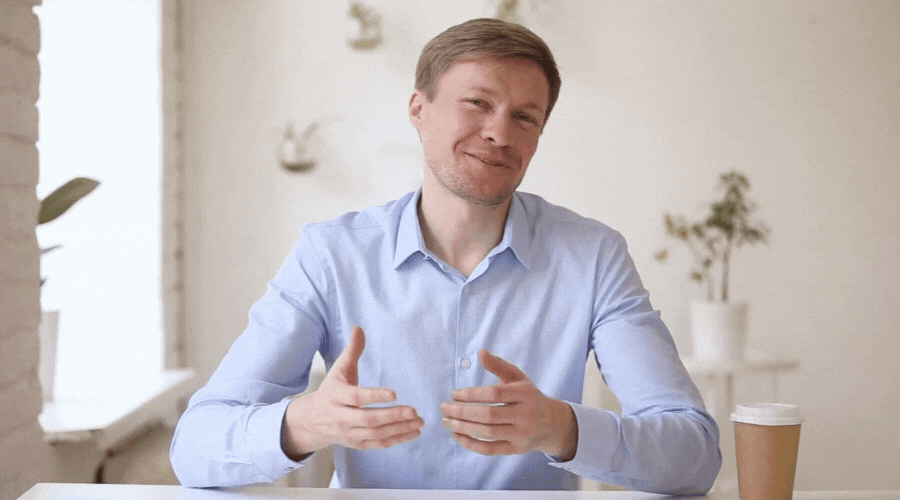Like the front page of a newspaper, your B2B website functions as a visitor’s first impression of your brand and what they can expect from you. It brings together your thought leadership, products and services, and industry updates relevant to your audience. A website that lacks the right design and resources will deter prospects and increase the difficulty of winning business.
A study from Adobe found that Australian consumers rank good display and engaging content as their top two priorities when viewing content. For your brand to make an excellent first impression and keep visitors engaged and even returning to your website, you must incorporate several key elements into its design.

Source: Adobe.
Easy navigation
Poorly designed navigation will discourage visitors from deeply exploring your site or cause them to click away quickly. B2B websites have an average bounce rate of 25% and 55%. The higher your bounce rate, the lower Google will rank your website. For these reasons, your brand needs an easy-to-navigate website.
Visitors should find navigating your site straightforward, with a design that prevents frustration. You should make information readily available and quick to find to keep visitors engaged.
Your homepage should link to subpages, including your blog, case studies, services, and other resources. When users visit a page, they should always find it easy to access different parts of the site or return to the homepage. This ease of movement across your site can help lower the bounce rate and increase user engagement.

Content relevant to B2B buyers
Adding relevant and diverse content to your website adds value for B2B audiences. Blogs, case studies, whitepapers and data sheets on industry-specific issues will encourage visitors to spend more time on your site. Content that answers the buyer’s challenges and questions encourages them to consider your services as a viable solution, potentially converting them from visitors to leads.
Ensure that your blogs, resources and videos are easily accessible from your homepage, ideally listed in the top navigation bar. These serve as your organisation’s knowledge hub, where customers find insights and prospects gather information to inform their purchasing decisions. A well-maintained blog is critical to establishing your brand’s authority and supporting the sales process.
Testimonials and case studies to build trust
Testimonials and case studies provide social proof of your credibility and build trust with potential clients. For B2B buyers, this evidence contributes significantly to the decision-making process and can influence a decision between your brand and your competitors. With 86% of businesses considering verified reviews as crucial for purchase decisions, case studies and testimonials build your site’s credibility.
Strategically placed testimonials and case studies greatly contribute to your website’s design. Quotes from customers on your home page and services page provide engaging and easily digestible insights. A video testimonial where clients speak about their experience with you is a great opportunity to engage visitors. This ensures that your social proof is visible at critical points, reinforcing your credibility when it matters most.

Informative product and service pages to showcase your capabilities
Product and service pages are the core of your B2B website because they showcase your company’s capabilities and value proposition. Effective services pages should include the following:
Concise information about your products and services: Include essential information and some technical details, keeping in mind that deeper technical discussions will occur during the sales process.
Your organisation’s value proposition: Explain why prospects might choose your services over others. Integrating testimonials and case studies can help highlight what makes your brand stand out.
Clear calls-to-action: Each product or service page should have clear CTAs to contact your team, request a quote, download a detailed guide or request a demonstration. These encourage visitors to take the next step in engaging with your business.
Clear calls-to-action that encourage engagement
CTAs convert site visitors into leads. Encouraging people to click on them requires your CTAs to be equally engaging and placed consistently across your site. A good website design should include the following types of CTAs:
Gated content: Provide links to gated assets like whitepapers, data sheets, webinars and eBooks. These resources support the buyer’s journey and, in exchange for contact details, generate leads.
Product demonstrations or consultations: Offer prospects the chance to experience your products through demonstrations or consultations, giving them a closer look at your offering.
Contact forms: Include a contact form that prompts visitors to initiate the sales cycle, allowing them to reach out for more information or with questions.
Newsletter sign-up: Place a sign-up form for your newsletter on your pages, inviting visitors to stay informed about new content and product offers.
CTAs should be action-oriented and placed where users naturally look for information or decide to engage further. For example, positioning CTAs at both the top and bottom of your product or service page allows the visitor two chances to engage.

Conclusion
Your website needs several key design elements to represent your brand, generate leads and reduce the bounce rate. Easy navigation will encourage people to explore beyond your home page, and if every page visited has appropriately placed CTAs, you can encourage people to engage further. Integrating relevant content, including testimonials and case studies, further underpins your brand’s authority and value proposition.
Resonate can build and manage your website
Like the front page of a newspaper, your website highlights what your brand offers and encourages people to continue engaging. We specialise in building websites that integrate design with usability. We understand the nuances of UI and UX and are committed to removing barriers that hinder user engagement. Even after launching your website, we provide continuous maintenance to keep your site at peak performance and adapt it as your business evolves. Visit our Websites page for more details on what we deliver.
Related blogs
10 reasons why WordPress remains a powerhouse CMS for B2B websites




